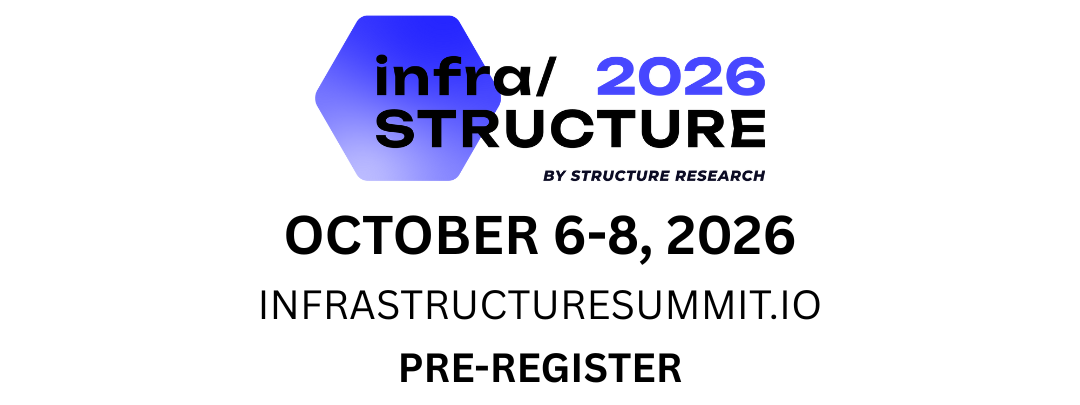WSS: More on hyperscale pullbacks and what it means as US global trade policy and its potential negative consequences looms
The past week saw yet more discussion and debate on the question of Microsoft’s recent pullbacks from infrastructure commitments and whether this reflects an overbuild situation at Microsoft and is a possible window into what is coming for the rest of the sector. Recent reporting by Bloomberg indicates there have been pullbacks in the UK, Australia and Indonesia, and in US markets such as North Dakota, Illinois and Wisconsin. Last week, we looked at some of the factors behind what is a second pause in Wisconsin. Elsewhere in the US Midwest, Microsoft has been aggressive in the hyperscale hub around Columbus, Ohio, picking up substantial land banks. Microsoft has apparently decided to put off developing that land into data centres for the time being and is the latest example of it dialling back long-term builds and reducing overall capacity. Microsoft has been quiet about things, but has gone on record about the situation. Noelle Walsh, the president of cloud operations and innovation, has explained that the pullbacks are part of the natural course of long-term infrastructure development, which makes sense. Some fine-tuning was inevitable and that is what looks to be the case here. There are more pauses and retrenchment, but it is important to keep in mind that some of the pauses are going to be driven by technology evaluations and design considerations. The pullbacks are real, but there are multi-faceted drivers, and even with everything that is happening, we remain confident this is more about paring down and optimizing long-term capacity requirements and the shifts in strategy from a single large customer. Microsoft also reiterated its commitment to spend $80b in CapEx in its current fiscal year. That has not been adjusted down.
Speaking of hyperscale CapEx, Google Cloud is also not wavering in its commitment to build. Google’s CEO confirmed that Google would spend $75b in CapEx in 2025 to support the growth and expansion of its cloud and AI businesses. Amid the Microsoft pullbacks, there has been unconfirmed reporting that Google is one of the hyperscalers that stepped into some of the commitments that Microsoft walked away from. This is just another data point that reflects the ongoing state of demand. A pullback in one or even a few isolated situations does not mean things are going bad all of a sudden. There continues to be ongoing overreactions to developments in the market that are actually the result of various things happening at the same time.
US global trade policy has moved in a number of different directions in the last several months and while it is fair to say that it is anything but settled, there are signs that it will be a permanent part of the landscape at least in the near-term. Needless to say, tariffs that equate to taxes are going to be disruptive to the data centre sector and not in a good way. Depending on what direction the US government’s tariff strategy goes (which is impossible to predict), it is possible that everything from materials to the semiconductors will be impacted, increasing costs for infrastructure development. The global supply chain that took such a beating during the pandemic is set to be hit again and this will have more long-term effects on the industry. There is a case to be made that there will be some benefits. Operators and hyperscalers will look to optimize and build redundancies into supply chains, look at technology and automation, and adjust capacity planning processes. But this will favour scaled operators over subscale ones, and it is not likely these benefits will offset the profound negative impact a chaotic global trade environment will cause. Infrastructure development relies on smoothly functioning supply chains that cross borders and it is just hard to see how tariffs and restrictions are going to help.
Geopolitics will continue to play out, but the business of the sector shows no signs of slowing down. On the strategic side, there continues to be M&A and investments. Carrier hotels and connectivity-centric assets, especially those with expansion runway possibilities, continue to be coveted and American Tower’s data centre arm CoreSite picked up a strategic asset in Denver. Meanwhile, in EMEA, we saw Khazna Data Centrers bring in more investors and Spain and UK-based GPU cloud provider NexGen Cloud completed a Series A funding round worth $45m. There continues to be GPU cloud expansion and we will have more details next week. But in the past week, we saw a NVIDIA-based GPU deployment from FluidStack land with Borealis Data Center in the Nordics. Meanwhile, operators are actively positioning to capture the inferencing component of AI, which will be run in smaller deployments and with second or third generation GPUs or even high-end CPUs. Akamai is doing this and rolled out a new cloud infrastructure targeted at inferencing workloads.
or



